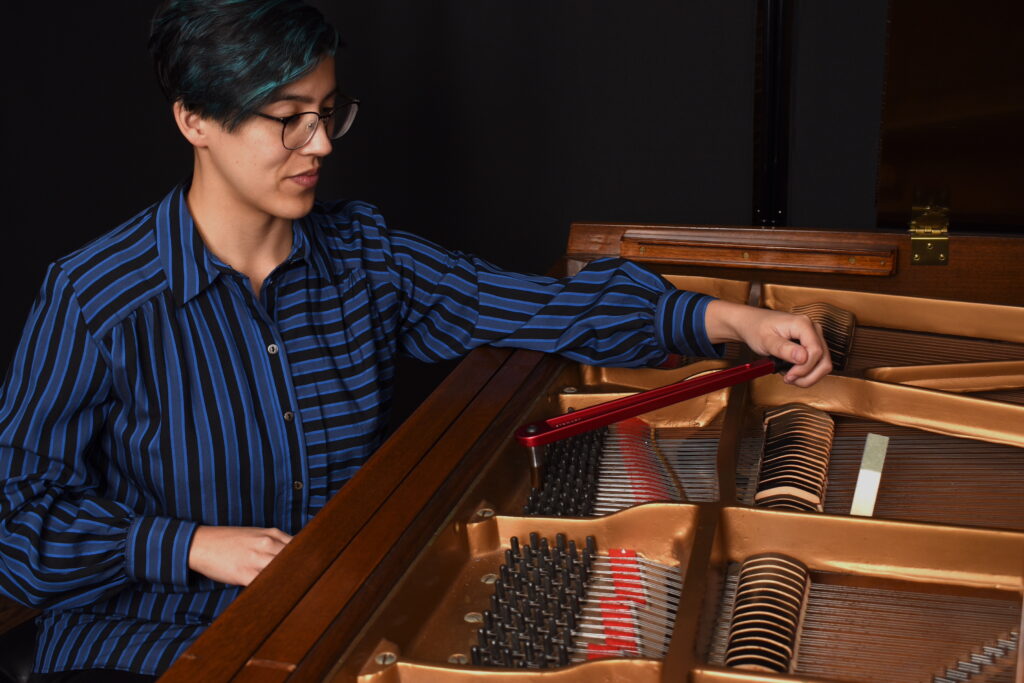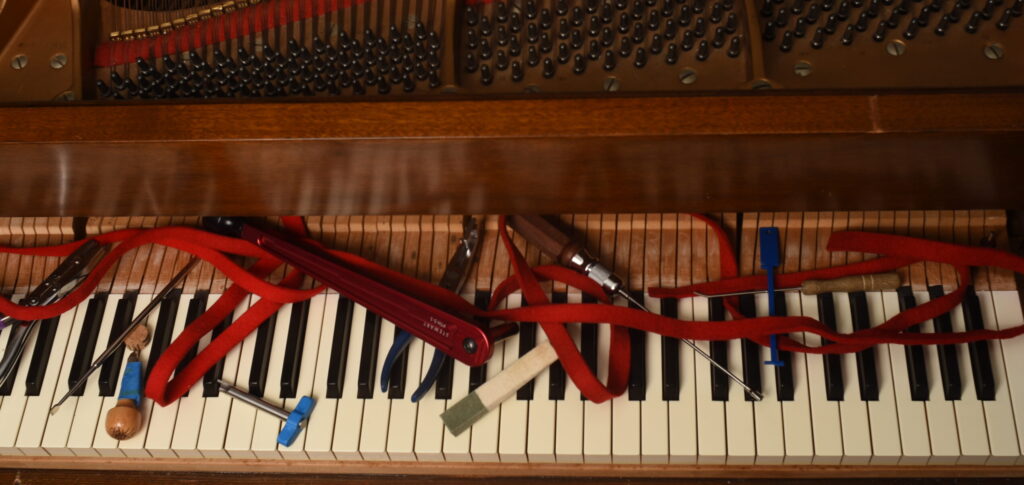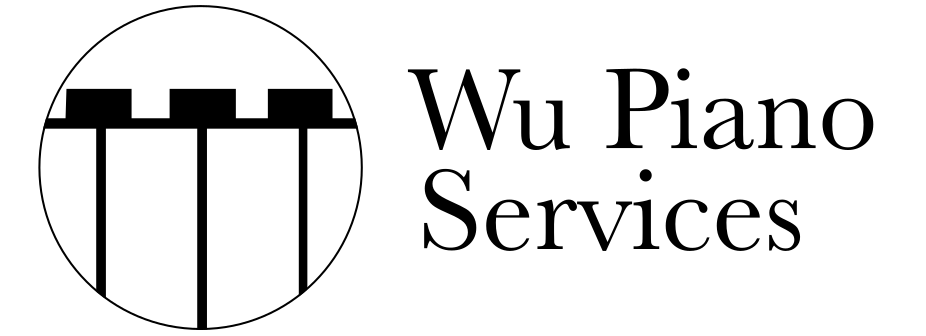Fine Tuning. A standard tuning to get your piano sounding its best.
Pitch Raise. An additional step done before a fine tuning if the piano is significantly out of tune. Many factors may necessitate a pitch raise, including but not limited to a long amount of time since the piano was last tuned, varying temperature and humidity levels, and the general condition of the piano.

Repair. Time and cost vary depending on the nature of the repairs. “Sticking” keys, squeaky pedals, broken hammers and strings, and so much more.
Regulation. Optimization of the hundreds of interconnected parts that work together to make a piano not only playable, but enjoyable to play. Just like a car needs maintenance from living in the elements and from regular wear and tear, a piano needs occasional maintenance to fix or replace worn-out parts, and to adjust the alignment of the different wood, felt, leather, brass, and steel parts to one another. Regulation can make your piano feel like new again.

Cleaning. Vacuuming, dusting, polishing, and cleaning the interior and exterior of your piano. Remove accumulated dust, pet hair, and dirt from all the hard-to-reach places. This not only makes your piano look its best, but can also improve the piano’s performance, as well as reduce allergens present in the room.
